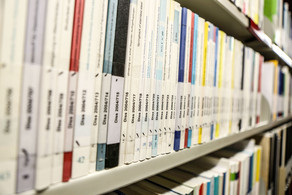PoJoMeC: The children's point of view is the focus of a new, interdisciplinary research project
- Allgemeines

Children of preschool and elementary school age usually neither watch the TV news nor read the newspaper. Nevertheless, they learn something about political and democratic contexts, for example from conversations with adults or from the media that surrounds them. But which attitude do children have towards political issues and how do they classify political knowledge in their knowledge base? What role do family media socialization and communication play and how do children's ideas of journalism or journalistic formats develop? So far, research has provided few answers to these questions.
The interdisciplinary research project PoJoMeC “Politics, Journalism and Media - Competencies in Pre- and Primary School Age” intends to close these gaps in research. To this end, three disciplines at TU Dortmund University have joined forces in a research community: political didactics, German / media didactics and journalism. On June 10, the project was presented to an academic public for the first time at the annual conference of the Gesellschaft für Politikdidaktik und politische Jugend- und Erwachsenenbildung (GPJE).
“I am enthusiastic about the cooperation with the other two departments so far. Of course, what drives us all is that we are breaking new ground with our research. And I'm sure that our interdisciplinary approach will lead to exciting insights, ”says Prof. Michael Steinbrecher, who is responsible for the project in the journalism department.
The declared aim of the joint research project is to obtain empirically well-founded knowledge about political socialization effects and conditions as well as the formation of democracy in connection with media offers and media activities in a longitudinal view. The research team uses the multi-methodical approach of Design Based Reaearch (DBR). This will make it possible, in addition to theoretical knowledge, to receive advice on educational measures in the three areas, which can be used, for example, as part of teacher training and journalist training and developed further with students.
The contact persons for the project are:




